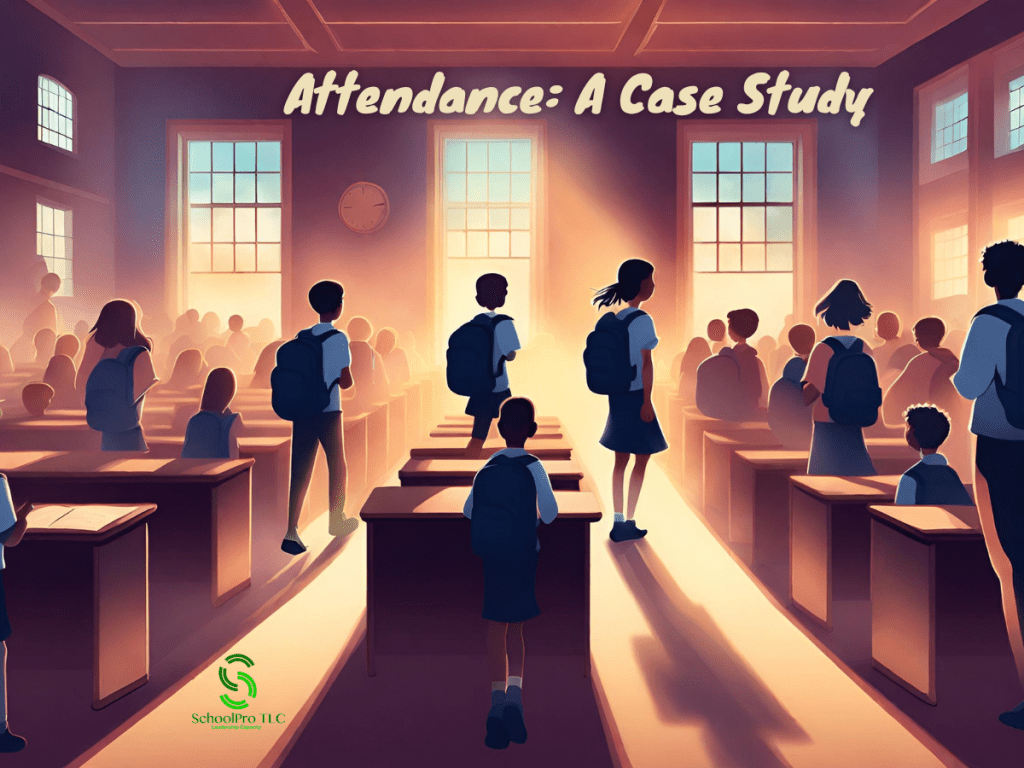When we start on attendance work with our schools we always talk about the ‘journey’ that we are about to embark on. There a few quick wins when it comes to attendance improvements. It’s the robustness of policy and the rigour in which the policy is carried out that makes the lasting impact.
The Starting Point
When I first met the attendance lead at Northway Infants, it was great to see the drive they had in improving the attendance of the children. Our starting position was comparable with the national picture, with whole school attendance sitting at just over 94% for the 21/22 academic year. However, rates of persistent absenteeism and vulnerable group attendance, specifically FSM/PP, had been below the national average over the previous years. Both of these aspects were raised in the schools IDSR (highlighted bold). So where did we start…?
The initial attendance audit focused on key areas:
- Policy
- Attendance monitoring
- Interventions
- Communication
- Safeguarding
Following this, an attendance action plan was produced that was to be monitored by the attendance lead and other members of the leadership team, along with the governors.
Putting the Actions in Place
A new policy was launched in line with the DfE guidance Sept 2022, with staff undertaking training to understand their roles and responsibilities in achieving good attendance for all children. The children were spoken to in assemblies and SAM (School Attendance Mascot) was launched, where the best attending class each week got to look after SAM for the following week. Parents and carers were sent an attendance letter signposting them to the new policy and class attendance was reported on each week in the school newsletter. Communicating with all stakeholders in this manner set the benchmark for the expectations of all.
The monitoring of attendance was moved from fortnightly to weekly with a key focus on PA and FSM/PP children. The leadership team added this to their weekly agenda and each child was ‘banded’ with specific interventions implemented at each stage. For example, if a child drops below 95% attendance, a letter was sent home informing parents that their child was now below the national average for attendance and informing them how the school could support them in ensuring their child’s attendance improved. The word ‘support’ changed the thinking of parents as previously, parents looked upon attendance communication as a negative (much like behaviour…but that’s a different discussion!).
With those systems in place, this led to ‘early intervention’, and positive, supportive attendance discussions took place far earlier and prevented that downward trend continuing.
Attendance was now a daily discussion with positive connotations. This enabled the ‘profile’ of attendance to be raised and developed a culture of good attendance, which in turn led to better outcomes for the children.
I visited the school termly to meet with the attendance lead, to view attendance data, discuss progress and improvements in-line the action plan.
Impact
Due to the comprehensive policy and the robustness that sat behind it, with all stakeholders playing their part, attendance in ALL areas showed an improvement.
- Whole school attendance sat at 1.1% above the National Average (wk 26 national data from the DfE – July 2023).
- Year-on-year attendance data looked very good: YrR 21/22 93.05 – Yr1 22/23 95.27, whilst Yr1 21/22 94.51 increased to Yr2 22/23 95.65.
- Persistent absenteeism sat at only 4.8%, down nearly 8 percentage points from the previous year and just over 12 percentage points below the national average (17.2%).
- FSM/PP attendance came in at 93.4%. This was a marginal gain of 0.5 percentage points but still sat above the national average.
So, What Next…?
You often see the phrase “eat, sleep, repeat,” but when it comes to attendance, it’s “policy, procedure, repeat!” Yes, there will have to be some modifications for certain individuals but, for the majority of the children under your stewardship, you need to get the basics right when it comes to attendance.
How Can SchoolPro TLC Help You?
Our attendance consultancy team can help build capacity in your setting by taking both a strategic and a hands-on approach to attendance. This can include supporting attendance reviews, analysing your data and advising on practices to help identify the best use of your resources. We can also support these plans where necessary.
Our main objective is to ensure young people achieve the best outcomes. We offer the assurance that detailed and accurate evidence and logs are maintained at all times, should they be required for the future.
Find out more on our Attendance page:

Attendance Reviews and Monitoring For Schools and Multi Academy Trusts - SchoolPro TLC
Our attendance consultancy team can help build capacity in your setting by taking both a strategic and a hands-on approach to attendance. This can include supporting attendance reviews, analysing your data and advising on practices to help identify the best use of your resources. We can also support…
Further information on specific Attendance packages can be found here:

Attendance Review (including written report)
SchoolPro TLC attendance review conducted in line with the latest Department for Education guidance and best practice. Produces a report and action plan for your school. £100 (+ VAT) Book your review today!

Hourly Attendance Support & Consultancy
SchoolPro TLC hourly attendance support and consultancy. Bespoke service dependent on the needs of your school. From £50 (+ VAT) per hour Book your time here!
Richard Morley
Director, SchoolPro TLC
SchoolPro TLC Ltd (2024)
SchoolPro TLC guidance does not constitute legal advice.
SchoolPro TLC is not responsible for the content of external websites.


